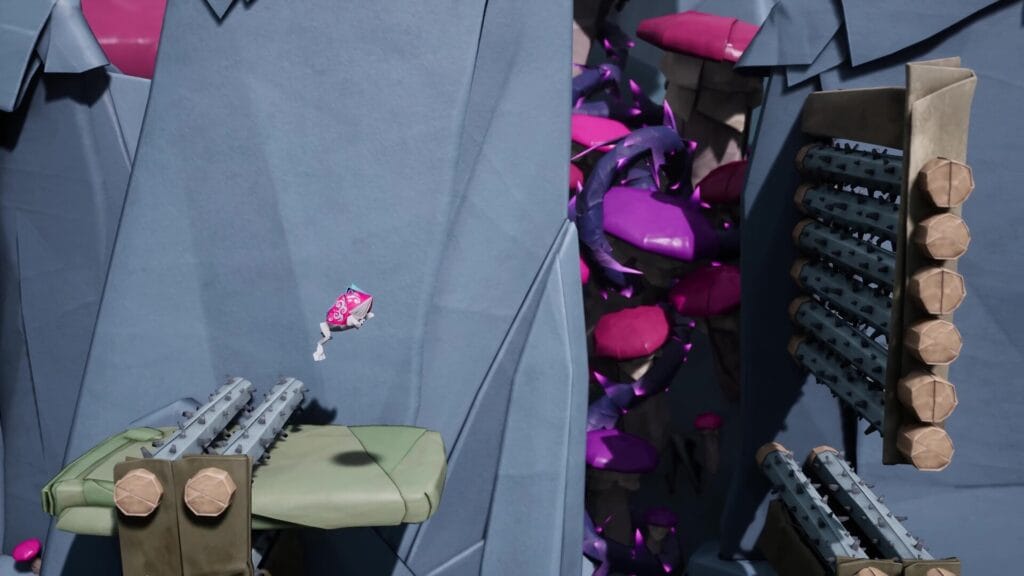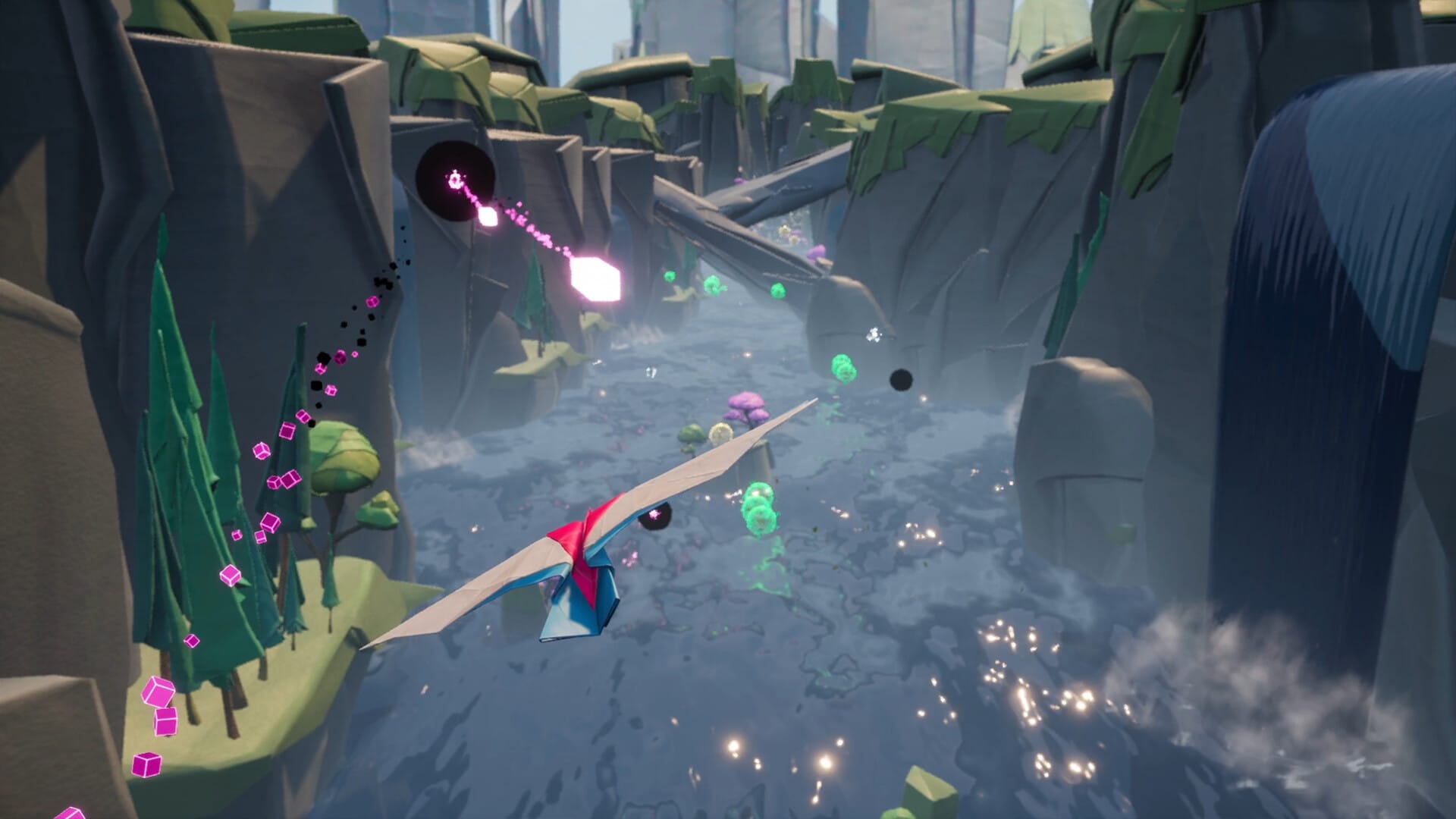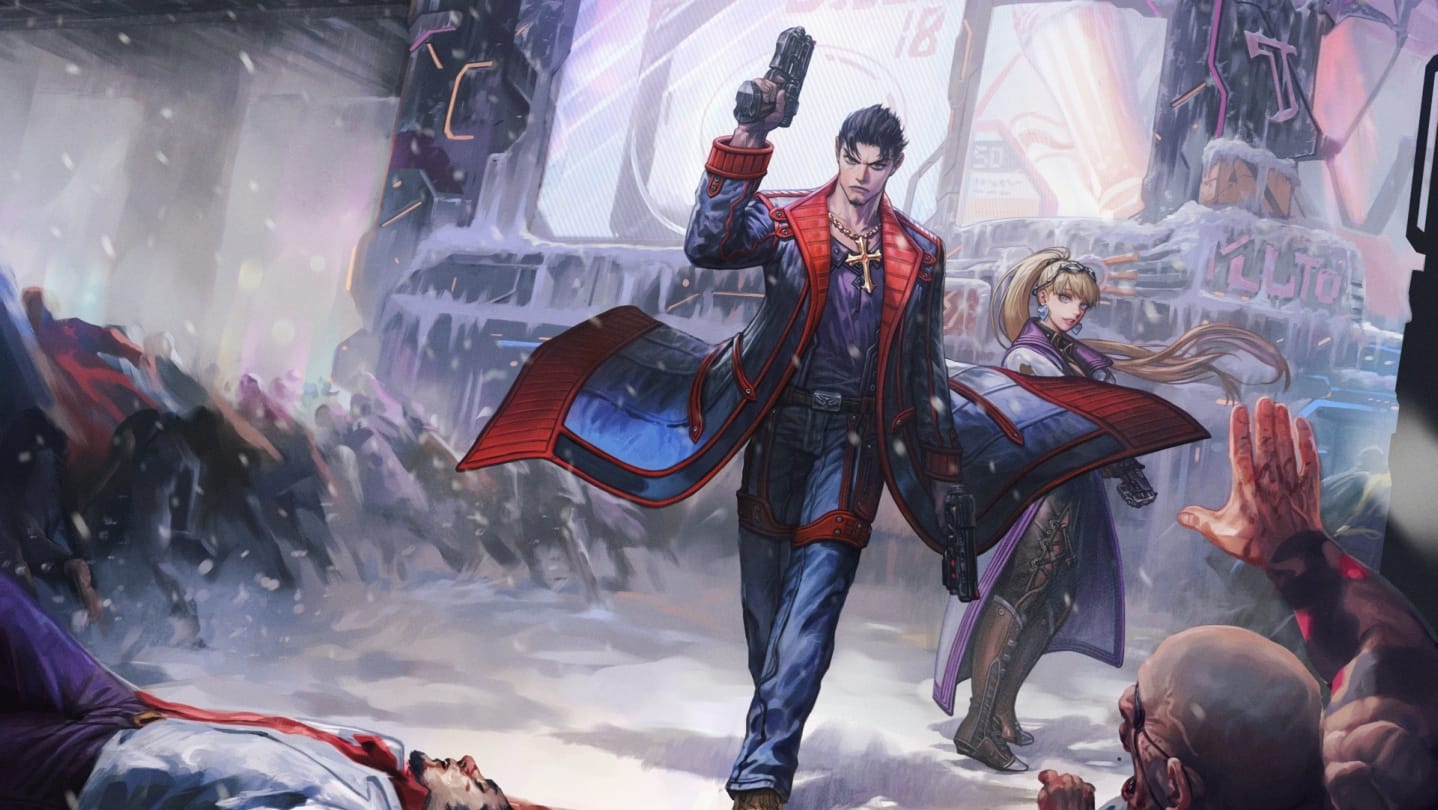There’s a false belief in some circles that people aren’t making 3D platformers nowadays. You hear it mostly when there’s a breakout hit or the rare time a big budget studio other than Nintendo makes a hit. If you’re only looking at the output of the biggest studios, that’s certainly the case. But if your taste in platformers isn’t limited almost entirely to Nintendo games, you’ll find the genre has been booming for years and has games aplenty to enjoy. Hirogami is just one example, a charming little game set in a papercraft world populated by origami figures and creatures.
You play as Hiro, a performer who’s thrust into the role of savior when the blight, an otherworldly digital force infecting the environment via large thorny vines and driving the inhabitants into a frenzied state. The fan he carries is able to cleanse the blight with ease, making him the prime candidate to lead the charge in fighting back against the digital invaders and restoring what damage they’ve wrought. He’s a reluctant hero, constantly deflecting any accomplishments and regularly attempts (and fails) to avoid getting involved deeper. He has some connection to the blight and the forces controlling it, which comes to a head in the way you’d expect it to. The plot is serviceable and predictable, but enjoyable for what it is.
Hiro’s unique ability is transformation. He can take on the form of a few different animals and use their skills for traversal and combat. The armadillo can roll and break through objects and eventually run through fire and lava unscathed, the frog gives him a higher jump and the ability to spit liquid that stuns anyone caught in its radius and later breathe fire, and the ape’s strength makes it excel at combat and breaking walls as well as allows Hiro to swing on and climb vines and ropes. You’re regularly swapping between forms as levels constantly require the use of these abilities, sometimes in quick succession.

The game is often at its best in those moments, allowing the otherwise relaxed pace of the platforming to properly challenge you. Likewise, attempting to speedrun a level to meet some of the optional objectives (finish a level within a set time, finish it without taking damage, etc.) forces you to make the most of Hiro’s kit. It’s nowhere on the same level as a proper speedrunning game where you’re discovering massive shortcuts and little optimizations to save time, but it scratches the itch well enough within the confines of its design the few times I needed to clear some extra objectives.
Combat is one of Hirogami‘s weaker points. It’s not bad, per se, but it isn’t particularly engaging either for how often you’re forced into it. Combat often occurs in arenas that pit you against waves of enemies. You have a good range of attacks to use, but few fights give you ample time to properly use them (let alone reason to), so it becomes a simple matter of finding the one attack that lets you clear fights quickly and cleanly and relying on that alone. I wanted to get each fight over as fast as possible so I could get back to the platforming because the intermittent fights seldom did anything for me. Boss fights are the one exception because they often incorporate your different forms well, which allows the fights to be more interesting than just clearing the same few kinds of foes as efficiently as possible. They mercifully don’t overstay their welcome either.
Nor does the game itself. It’s a quick and breezy jaunt, a pleasant rudimentary platformer with a nice look. It’s enjoyable the way a simple solid platformer can be, the sort of game that has no lofty ambitions apart from being a good time.
Callum Rakestraw is the Reviews Editor at Entertainium. You can find him online at Bluesky, Mastodon, and his blog.





